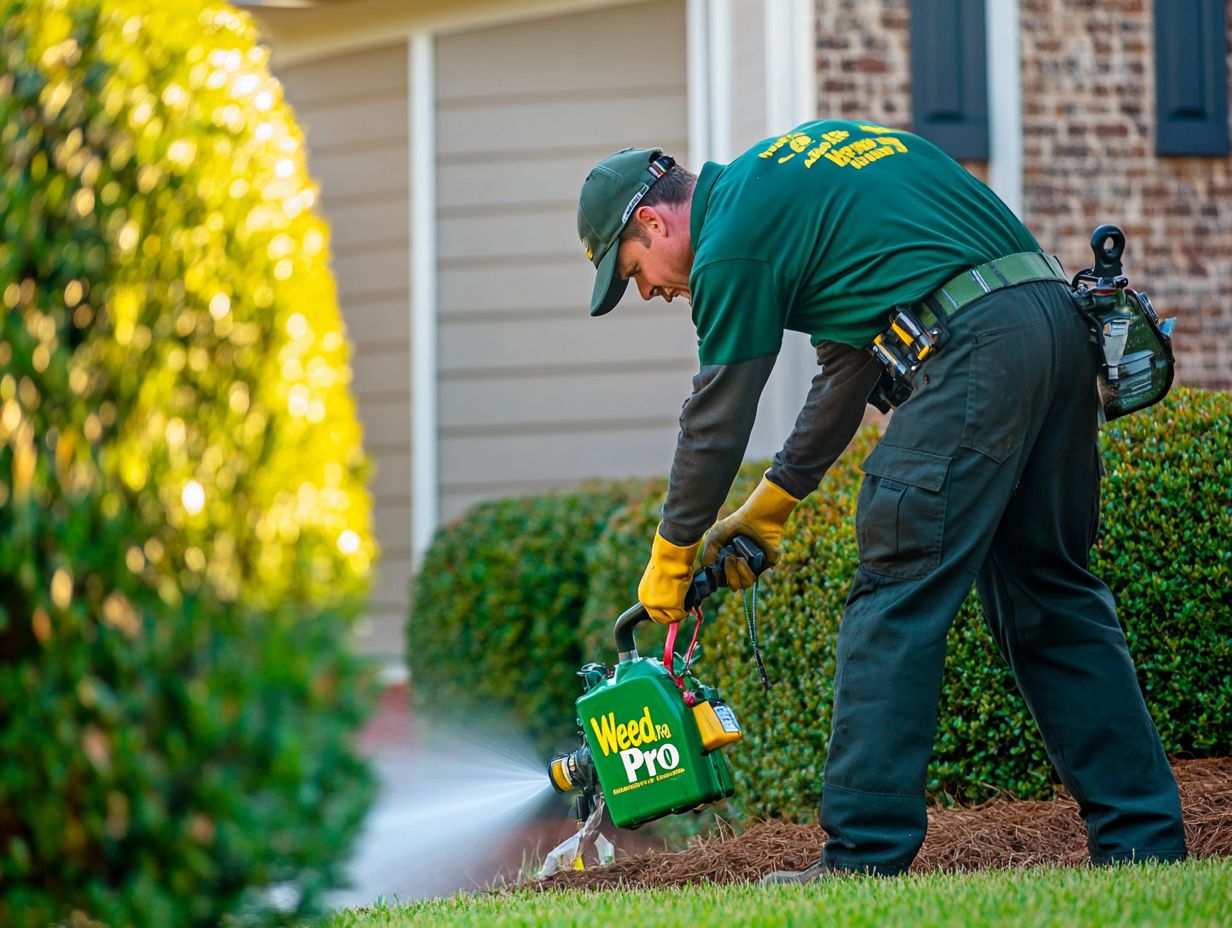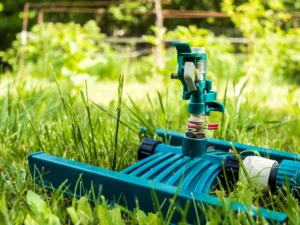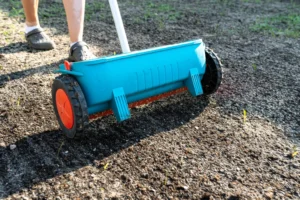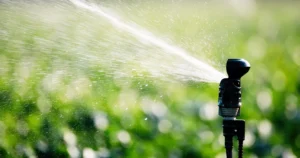If you’re dealing with pesky weeds in your lawn, you might be wondering about the best control methods to use. It’s a question we at WeedPro get asked all the time. Two of the most common approaches are spot spraying and blanket weed control. Each method has its own benefits and drawbacks, making it essential to understand which one is suitable for your specific needs. In this text, we’ll explore these techniques in detail, helping you decide on the best strategy to achieve a thriving, weed-free lawn.
Overview of Spot Spraying vs blanket weed control
Spot spraying is a method that focuses on applying herbicides directly to specific weeds rather than treating an entire area. This technique employs advanced technology, including green-on-brown detection systems that can identify and target weeds with remarkable accuracy. At WeedPro, we use modern spot spraying systems which utilize specialized sprayers and nozzles to deliver herbicides precisely, ensuring efficient and targeted application. Blanket weed control on the other hand involves the uniform application of herbicides across entire areas, irrespective of weed density or location. This traditional method covers all parts of the lawn or field uniformly, ensuring comprehensive treatment. Let’s deep dive into both methods.

Spot Spraying Technology
Spot spraying technology is a major innovation transforming weed control by bringing precision and efficiency to the forefront of lawn care strategy. Unlike traditional blanket spraying, which covers the entire lawn regardless of weed presence, spot spraying systems use advanced sensors, GPS mapping, and artificial intelligence to detect and treat only the areas where weed growth is present. This targeted approach means that herbicides are applied exactly where needed, dramatically reducing chemical usage and minimizing waste.
One of the focuses of spot spraying technology is to have a positive impact on soil health and the environment. It uses up to 90% less herbicide compared to blanket spraying, all via targeting weeds specifically. As a result these systems significantly lower the risk of chemical runoff, which can harm beneficial plants and disrupt soil ecosystems. This not only protects your lawn but also supports broader environmental benefits by reducing the overall chemical load on the ground and in nearby waterways.
Due to the emphasis on high value tech their is a high initial investment barrier when it comes to implementing spot spraying technology, but proponents argue the long-term cost savings are substantial, offsetting the initial investment. By cutting down on chemical usage and reducing the frequency of treatments, lawn care professionals and farmers can see a marked decrease in operational costs. The efficiency of these spraying systems also means less time spent on weed control, so for business it’s freeing up resources for other essential yard and farm operations.
Adaptability is another key feature of modern spot spraying systems. These technologies can be fine-tuned to suit different lawn types, soil conditions, and weed challenges. By adjusting the herbicide mix and spray patterns, users can create a customized weed control plan that maximizes effectiveness while minimizing risk to healthy plants. This level of precision helps prevent the spread of weeds and reduces the need for repeated blanket applications, making it a smart choice for sustainable lawn care.
Looking ahead, spot spraying technology is set to play an essential role in the future of effective weed management. As these systems continue to evolve, they promise even greater efficiency, cost effectiveness, and environmental protection.
Advantages of Spot Spraying
As we’ve mentioned the most significant advantage of spot spraying is the dramatic reduction in herbicide usage. Systems can reduce chemical use by up to 90% compared to traditional spraying methods. This not only saves you money on herbicide expenses but also improves resistance management by minimizing the overall chemical load on your lawn. Spot spraying also contributes to better resource management by optimizing the use of chemicals and other inputs, ensuring more efficient and eco-friendly weed control. Spot spraying allows for greater flexibility and precision, making it particularly beneficial for those practicing organic lawn care, aiming to uphold healthy ecosystems. By minimizing chemical runoff and protecting beneficial organisms, spot spraying significantly reduces the environmental impact compared to blanket weed control.
Limitations of Spot Spraying
Even though its benefits, spot spraying has some limitations. One major drawback is the high upfront investment cost. The technology requires specific equipment and training, which can be a barrier for homeowners and smaller businesses. For those using a spot sprayer for the first time, learning proper mixing techniques for weed control products and understanding how to adjust spray pressure are important steps to ensure effective application. Also, there’s a risk of missing some weeds during application, and performance can be affected under certain conditions, potentially making widespread adoption more challenging.
Blanket Weed Control

Blanket weed control involves the uniform application of herbicides across entire areas, irrespective of weed density or location. This traditional method covers all parts of the lawn or field uniformly, ensuring comprehensive treatment. This approach is often referred to as a blanket app or blanket application, and in lawn care, it is sometimes called a blanket spray. Blanket applications are designed to cover the entire area, ensuring no spots are missed and providing effective coverage for large or heavily infested spaces.
Advantages of Blanket Weed Control
The primary advantage of blanket weed control is its simplicity and full coverage. Which makes it a preference for homeowners who want to handle their own lawns but don’t want to make a major up front monetary and skill investment in learning spot spraying. It also appeals to smaller businesses who have capital restraints. The technique itself is particularly effective in large fields or newly infested areas, as it ensures that even small weeds are effectively targeted. Blanket applications are especially useful for controlling aggressive weeds like clover, which can quickly spread across a lawn. Applying blanket treatments in the fall can also be especially effective for managing certain weed species. It requires minimal training and provides reliable results across a wide area, making it an appealing option for new customers dealing with heavily weeded lawns.
Limitations of Blanket Weed Control
On the flip side, blanket weed control leads to higher herbicide usage and increases the risk of chemical runoff and drift. This method also results in elevated labor and equipment costs in the long term, with less precision than targeted spraying methods. So, it can lead to unnecessary applications in areas with minimal weed presence.
Comparative Analysis: Spot Spraying vs Blanket Control
When comparing spot spraying and blanket weed control, it becomes clear that each method excels in different areas. Spot spraying offers chemical efficiency and environmental protection, as it minimizes herbicide use by targeting specific weeds and is ideal for treating particular spots where weeds are present. Conversely, blanket control provides comprehensive coverage and is straightforward to carry out, making it efficient for larger areas with extensive weed problems. Factors such as weed type and density matter when choosing the best approach. And also monetary capacity if you’re a homeowner or business owner. Eventually, as you gain experience with both methods, you can refine your lawn care strategy for even better results.
Factors to Consider When Choosing an Approach
Your choice between these methods should depend on several factors: the type and density of weeds in your lawn, the size of the treated area, and your eco-friendliness priorities. If your lawn has only a few weeds scattered across a large area, spot spraying may be the more cost-effective option. Conversely, if you’re tackling widespread infestations, blanket treatment might be the quickest solution.
Best Practices for Effective Weed Management
An effective weed management strategy often combines both methods. Blanket applications can quickly address widespread infestations, giving your lawn a fighting chance. Afterward, spot spraying can eliminate any remaining weeds that were missed during the initial pass. Spot spraying technologies like Weed it can be used before seeding to target weeds efficiently and reduce chemical use. Timing both blanket and spot applications relative to seeding is important for optimal weed control and successful lawn establishment. This integrated approach maximizes effectiveness while keeping overall chemical use to a minimum.
To conclude, both spot spraying and blanket weed control have their place in effective weed management. Spot spraying is ideal for precision and reducing chemical use, while blanket control excels at covering large areas quickly. By understanding the strengths and limitations of each method, you can make a well-informed choice that aligns with your lawn care goals. Remember, a well-maintained lawn is not just about eliminating weeds: it’s about creating a thriving outdoor space that adds beauty and value to your home.
Frequently Asked Questions
What is spot spraying in weed control?
Spot spraying is a targeted approach where herbicides are applied directly to specific weeds, significantly reducing chemical usage by up to 90% compared to traditional methods. To spot spray individual weeds for maximum efficiency, use a spot spraying system or handheld sprayer to apply herbicide only to the weed patches, such as nutsedge or clover, rather than treating the entire area.
How does blanket weed control work?
Blanket weed control involves applying herbicides uniformly across an entire area, ensuring comprehensive treatment for all weeds, making it effective for large or newly infested spaces.
What are the advantages of spot spraying over blanket control?
Spot spraying offers greater precision and minimizes herbicide use, enhancing environmental protection by reducing runoff, making it ideal for eco-friendly lawn care practices.
When is it best to use blanket weed control?
Blanket weed control is best for treating large areas with extensive weed infestations, as it ensures complete coverage and addresses the issue quickly, although it may increase herbicide usage.
Can I combine spot spraying and blanket control for better results?
Yes, combining both methods is effective. Use blanket applications to tackle widespread infestations first, followed by spot spraying to target remaining weeds and minimize overall chemical use.
What factors should I consider when choosing between spot spraying and blanket weed control?
Consider the type and density of weeds, the size of the area, and your eco-friendly priorities. Spot spraying suits scattered weeds, while blanket control is effective for widespread problems.







